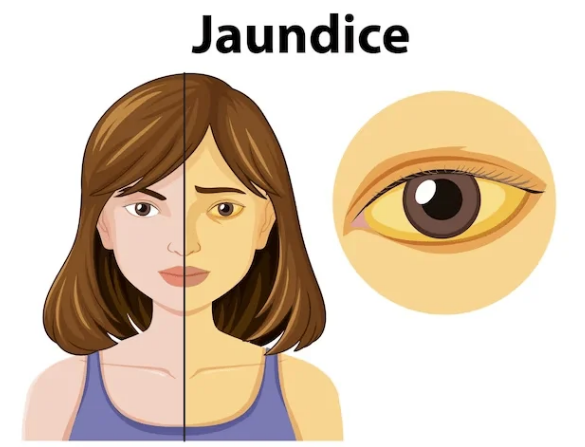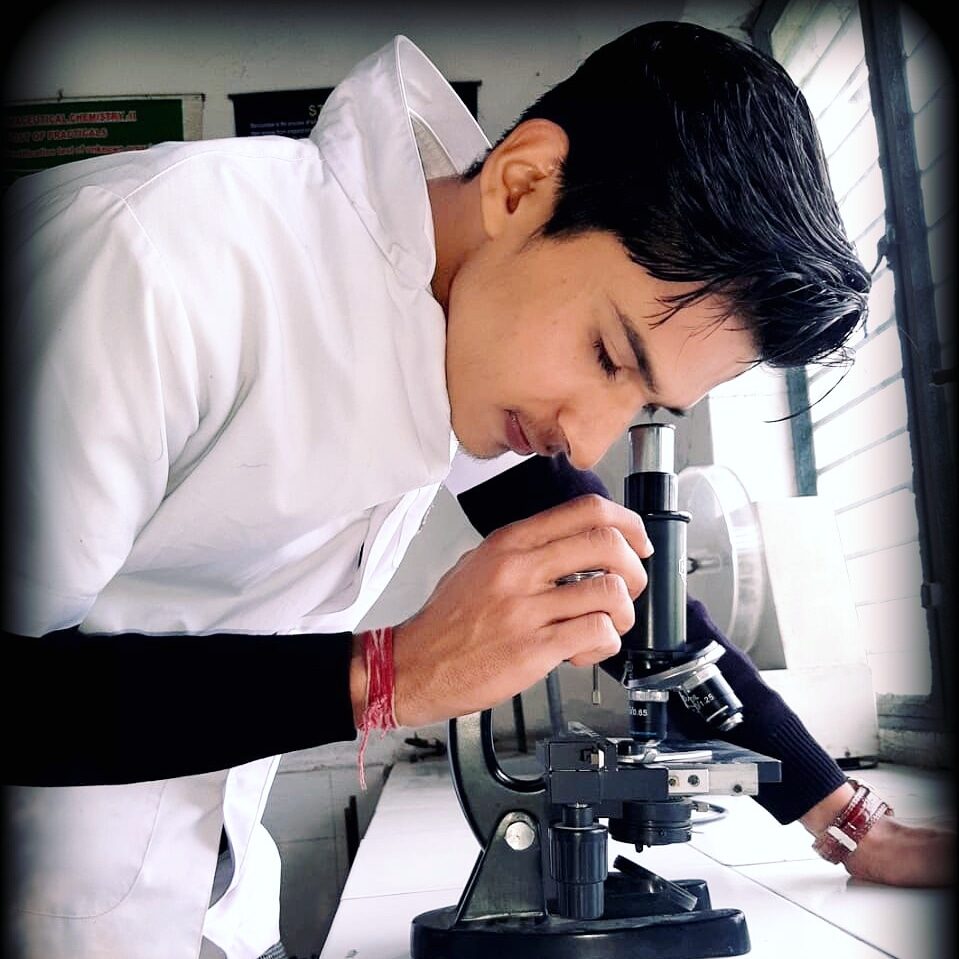Jaundice is a condition characterized by the yellowing of the skin, mucous membranes, and sclera (the whites of the eyes) due to an elevated level of bilirubin in the blood, a condition called hyperbilirubinemia. Bilirubin is a yellow pigment formed during the breakdown of red blood cells (RBCs) and is normally processed by the liver for excretion.

Pathophysiology of Jaundice
1. Bilirubin Formation: Red blood cells (RBCs) are broken down in the spleen, releasing hemoglobin, which is then degraded into heme and globin. The heme component is further converted into unconjugated bilirubin, a lipid-soluble substance.
2. Bilirubin Transport: Unconjugated bilirubin binds to albumin in the blood and is transported to the liver.
3. Liver Metabolism: The liver converts unconjugated bilirubin into conjugated bilirubin (water-soluble) via the enzyme UDP-glucuronosyltransferase.
4. Excretion: Conjugated bilirubin is excreted into the bile, enters the intestines, and is converted to urobilinogen by intestinal bacteria. Urobilinogen is either excreted in the feces or reabsorbed into the blood and excreted in urine.
5. Jaundice Development: Disruption at any stage of bilirubin metabolism or excretion can lead to jaundice.
Types of Jaundice
1. Pre-Hepatic Jaundice: Pre-hepatic jaundice occurs due to the excessive breakdown of red blood cells (hemolysis), which overwhelms the liver’s capacity to process bilirubin. As a result, unconjugated bilirubin predominates in the bloodstream. Common causes include conditions such as hemolytic anemia, sickle cell anemia, and malaria.
2. Hepatic Jaundice: Hepatic jaundice results from liver dysfunction that impairs the uptake, conjugation, or excretion of bilirubin. This leads to a mix of unconjugated and conjugated bilirubin in the bloodstream. Common causes include hepatitis (viral, alcoholic, or autoimmune), cirrhosis, liver failure, and genetic disorders such as Gilbert’s syndrome and Crigler-Najjar syndrome.
3. Post-Hepatic (Obstructive) Jaundice: Post-hepatic jaundice occurs due to obstruction in bile flow, which prevents the excretion of bilirubin. As a result, conjugated bilirubin accumulates and predominates in the bloodstream. Common causes include gallstones, tumors such as pancreatic or bile duct cancer, strictures in the bile ducts, and parasitic infections like liver flukes.
Clinical Features
1. Symptoms: Yellowing of the skin and sclera, Dark urine (due to excreted conjugated bilirubin), Pale stools (in obstructive jaundice), Fatigue and malaise, Pruritus (itching) due to bile salt deposition in the skin, Abdominal pain (common in obstructive jaundice).
2. Signs: Enlarged liver or spleen (hepatosplenomegaly), Ascites (in liver failure or advanced cirrhosis), Spider angiomas and palmar erythema (in chronic liver disease).
Diagnosis
1. Laboratory Tests:
Serum Bilirubin: Total, direct (conjugated), and indirect (unconjugated) bilirubin levels.
Liver Function Tests:
Elevated ALT, AST (indicate liver damage).
Elevated ALP, GGT (indicate biliary obstruction).
Complete Blood Count: Anemia in hemolysis.
Coagulation Profile: Prolonged PT/INR in liver dysfunction.
2. Imaging:
Ultrasound: Detects gallstones, bile duct obstruction, or liver abnormalities.
CT or MRI: Detailed assessment of tumors or strictures.
Endoscopic Retrograde Cholangiopancreatography (ERCP): Visualizes and treats bile duct obstructions.
3. Specific Tests:
Viral Markers: Hepatitis A, B, C, or E serologies.
Autoimmune Markers: Antinuclear antibody (ANA), anti-smooth muscle antibody (SMA).
Genetic Testing: For inherited disorders like Gilbert’s syndrome.
Treatment of Jaundice
1. Pre-Hepatic Jaundice: Treat underlying cause (e.g., blood transfusion in severe hemolysis). Manage anemia and maintain hydration.
2. Hepatic Jaundice:
Viral Hepatitis:
Supportive care (rest, hydration).
Antiviral therapy for hepatitis B or C.
Alcoholic Hepatitis:
Abstinence from alcohol.
Nutritional support (e.g., thiamine, folate).
Corticosteroids in severe cases.
Chronic Liver Disease: Lifestyle changes and medications (e.g., lactulose for encephalopathy). Liver transplantation in end-stage disease.
3. Post-Hepatic Jaundice:
Gallstones: Cholecystectomy (surgical removal of the gallbladder).
Biliary Obstruction: ERCP or surgery to relieve obstruction.
Tumors: Chemotherapy, radiotherapy, or surgery based on tumor type.
Complications
1. Acute:
Severe itching leading to skin infections.
Acute liver failure (fulminant hepatitis).
Sepsis (in obstructive jaundice).
2. Chronic:
Vitamin deficiencies (A, D, E, K) due to fat malabsorption.
Portal hypertension in chronic liver disease.
Liver cirrhosis.
Prevention
Vaccination against hepatitis A and B.
Safe alcohol consumption or abstinence.
Maintaining a healthy diet and weight to prevent fatty liver disease.
Avoiding hepatotoxic drugs or substances.
Prognosis
The outcome of jaundice depends on the underlying cause. Early diagnosis and treatment generally lead to better outcomes. Chronic conditions like cirrhosis or malignancy require long-term management and may have a poorer prognosis.
Visit to: Pharmacareerinsider.com




